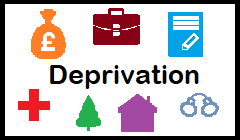Indices of Deprivation

The 2019 Indices of Deprivation were published by the Government on the 26th September 2019, updating the previous indices released in 2015.
The indices contain a suite of deprivation measures that includes the Index of Multiple Deprivation (IMD), the official measure of relative deprivation for small areas across England, and separate aspects of deprivation covering income, employment, education, health, crime, barriers to housing and services and the environment. There are also summary deprivation measures for larger areas such as local authorities like Dudley.
The indices are used both nationally and locally to distribute and bid for funding, target resources, as evidence in the development of strategies and to focus programmes on the most deprived areas. The voluntary and community sector also use the indices, for example, to identify areas where people may benefit from the services they provide.
The Indices of Deprivation 2019, Dudley Borough report examines the indices from a Dudley perspective, including further information and maps showing the patterns of deprivation.
Findings from the report include:Dudley is ranked 104th of the 317 local authority districts in England (where 1 is most deprived) by the IMD 2019 average rank measure; the equivalent ranking in the IMD 2015 was 114th
This is in the context of all but one of Dudley’s ‘most similar’ local authorities also experiencing a relative increase in rank (moving closer to a rank of 1)
22 (10.9%) of Dudley’s 201 Lower Super Output Areas (LSOA) are amongst the 10% most deprived in England, and 52 (25.9%) are amongst the 20% most deprived in England
Using the latest population estimates from 2017 shows that 28.1% of Dudley residents live in areas in the 20% most deprived in England
